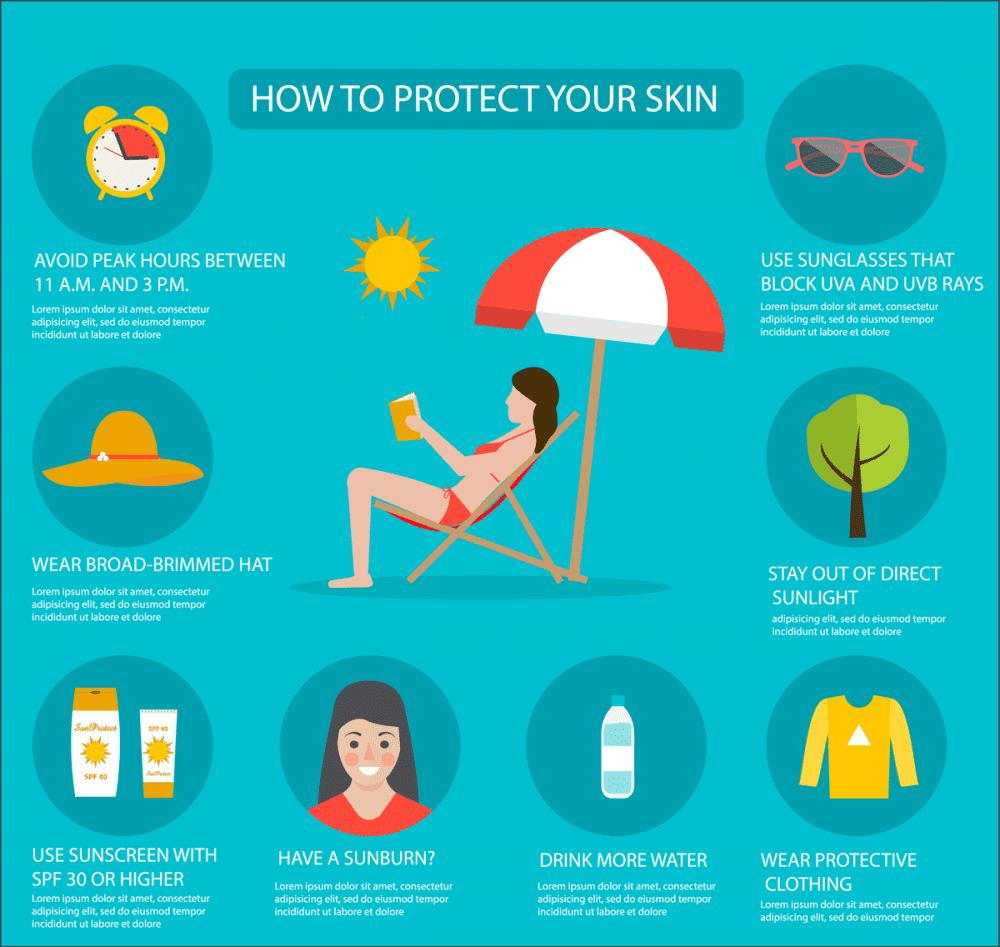720 W 71st Street S Tulsa, OK 74132
333 S 38th St, STE F Muskogee, OK 74401
3300 S Aspen Ave, Ste A Broken Arrow, OK 74012
Sunscreen and Tips to Decrease Skin Cancer Risk

Sun Safety and Reducing Your Skin Cancer Risk
Since spring is right around the corner, we at Southside Dermatology would like to take the opportunity to blog a refresher on proper sun safety. As one in five Americans will develop some form of skin cancer during their lifetimes, sunscreen should be an important part of your daily routine – even during the winter.
An SPF, also known as sun-protective factor, of at least 30 is recommended. While SPF 30 is the minimum, a recent study* demonstrated that a higher SPF may provide additional benefit over what was previously thought, because it has been shown that most people do not apply adequate amounts of sunscreen. Thus, a higher SPF may be needed to confer adequate protection.
Ultraviolet Radiation – Sunlight consists of two types of harmful radiation – UVA (ultraviolet A) and UVB (ultraviolet B). Both of the harmful types of radiation can cause skin cancer. The sun emits harmful UV rays year round. Even when it is cloudy outside, UV rays can penetrate the skin.
Tanning – There is no safe tan. Each time you tan, whether in a tanning bed or by laying out on a sunny day, you damage your skin. This damage to the skin speeds aging and increases your risk for all types of skin cancer.
How To Protect Your Skin from the Sun
The American Academy of Dermatology recommends that everyone:
Seek Shade when appropriate, remembering that that the sun’s rays are strongest between 10 a.m. and 2 p.m. If your shadow is shorter than you are, seek shade.
Wear Protective Clothing, such as long sleeved shirts, pants, a wide-brimmed hat and sunglasses, when possible.
Generously apply a broad-spectrum, water-resistent sunscreen with a Sun Protective factor of at least 30 to all exposed skin. Broad-spectrum sunscreen provides protection from both UVA and UVB rays. Reapply every two hours, or after swimming or sweating. Use extra caution near water, snow, and sand, as they reflect damaging rays of the sun, which can increase your chance of sunburn.
Avoid tanning beds. Ultraviolet light from tanning beds can cause skin cancer and premature skin aging.
How to Use Sunscreen
Recommendations from the American Academy of Dermatology
Use enough sunscreen to generously coat all skin that will note be covered by clothing. One ounce – enough to fill a shot glass, is considered the amount needed to cover the exposed areas of the body. Adjust the amount of sunscreen applied depending on body size.
Apply sunscreen to dry skin 15 minutes before going outdoors.
Skin cancer can also form on the lips – to protect your lips, apply a lip balm or lipstick that contains sunscreen with an SPF of 30 or higher.
Some sunscreens include an expiration date. If the expiration date has passed, throw the sunscreen out. Look for visible signs that the sunscreen may no longer be good – these include changes in the color or consistency.
If you have sensitive skin (burning or rash with application of sunscreens)
• Look for a physical blocker (mineral based sunscreen) which is made of titanium dioxide and/or zinc oxide, these tend to be less irritating and contain fewer potential skin allergens
Examples include
• CeraVe Invisible Zinc • Neutrogena Pure Baby • Elta MD product line of sunscreens • Vanicream sunscreen (available at CVS, Walgreens, Walmart, and others)
If you have acne prone skin
• Look for noncomedogenic products, may also consider using a sunscreen containing salicylic acid for daily facial use
Examples include
• Neutrogena Clear Face • Cetaphil DermaControl Oil Control Moisturizer with spf
Check your skin and see one of the dermatologist at Southside Dermatology & Skin Cancer Surgery for a skin cancer screening if you notice any lesions that are changing, itching, bleeding, or new.
And remember, you should wear your sunscreen year-round and always practice good sun safety habits!
Reference: Journal of the American Academy of Dermatology (J Am Acad Dermatol. 2018;78:902-10) https://www.ncbi.nlm.nih.gov/pubmed/29291958
Mon
8:00 am - 5:00 pm
Tue
8:00 am - 5:00 pm
Wed
8:00 am - 5:00 pm
Thu
8:00 am - 5:00 pm
Fri
8:00 am - 3:00 pm
Saturday
Closed
Sunday
Closed
Contact Us
Maps & Locations
Find us on the Map
3300 S Aspen Ave, Ste A
Broken Arrow, OK 74012, United States
